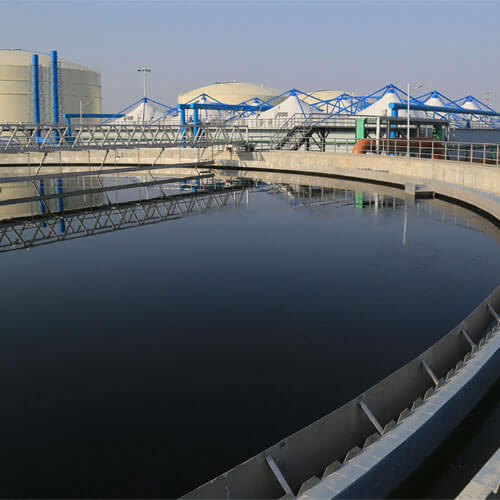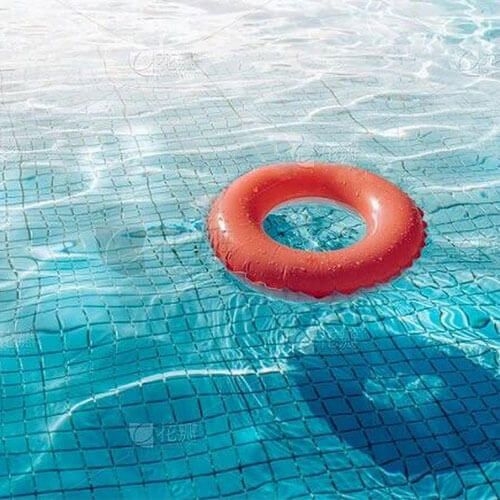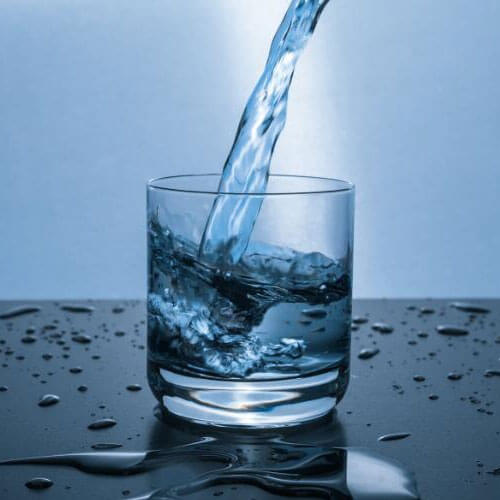Water quality parameters are indicators used to assess the condition and trends of aquatic environments. Monitoring is essential for various water sources such as drinking water, well water, and industrial wastewater. The U.S. Environmental Protection Agency (EPA) has established mandatory limits for over 90 potential contaminants found in water. These parameters are designed to protect human health and prevent waterborne diseases.
Industrial wastewater must undergo proper treatment processes before discharge, while drinking water requires rigorous testing before it can be safely consumed. A wide range of parameters is used to evaluate water quality, generally classified into three main categories: physical, chemical, and biological. These include a variety of indicators such as color, odor, temperature, turbidity, pH, and bacterial content.
Three types of water quality parameters
- Physical parameters include odor, taste, color, suspended solids, temperature, turbidity, electrical conductivity, and total dissolved solids (TDS).
- Chemical parameters include water pH, chlorine, chemical oxygen demand (COD), biochemical oxygen demand (BOD₅), dissolved oxygen (DO), ammonia nitrogen, and various free ions such as calcium (Ca²⁺), magnesium (Mg²⁺), ammonium (NH₄⁺), potassium (K⁺), and nitrate (NO₃⁻).
- Biological parameters include bacteria, algae, and viruses.
Physical water quality parameters
Odor
Odor refers to the various smells emitted from water, typically caused by volatile substances dissolved in it. These odors may originate from natural sources such as algae, decaying vegetation, and organic matter in soil, or from anthropogenic pollution including industrial wastewater, pesticides, oil spills, and domestic sewage. While odor itself may not pose a direct health risk, it often serves as an early warning sign of water contamination.
Measurement: Generally assessed qualitatively through sensory evaluation (smelling) or quantitatively using the threshold odor number (TON) via dilution methods.
Taste
Taste refers to the sensory perception experienced in the mouth when consuming water. Similar to odor, taste is primarily caused by substances dissolved in the water. Natural minerals( such as chlorides and sulfates), microbial metabolites, dissolved metal ions(like iron and manganese), as well as various organic and inorganic pollutants, can all affect the taste of water.
Measurement: Primarily assessed qualitatively through human taste perception, or quantitatively using sensory panels under controlled conditions.
Color
Water is typically expected to be colorless and transparent. However, the presence of dissolved or suspended substances can impart various colors to it. Color affects the aesthetic quality of water, particularly for drinking purposes. Elevated color levels may also indicate the presence of organic contaminants.
Measurement: Determined using colorimetric methods by comparing with standard color solutions, or measured quantitatively with a spectrophotometer.
Temperature
Water temperature influences several aspects of water quality, including odor, chemical reaction rates, solubility, taste, and viscosity. Processes such as biological oxygen demand (BOD), sedimentation, and chlorination are all temperature-dependent. The ideal temperature range for drinking water is typically between 50–60°F (10–16°C).
Measurement: Measured using a water temperature sensor or thermometer.
Turbidity
Turbidity is typically associated with the concentration of silt, clay, and organic matter in water. Changes in turbidity levels provide a direct visual indication of water quality. When turbidity is below 5 NTU, the water is considered clear; values above 5 NTU indicate visible turbidity, and levels exceeding 50 NTU often suggest severe pollution.
Measurement: Measured using a turbidity sensor, which detects the intensity of light scattered by suspended particles in the water.
Electrical conductivity is a common parameter in various water quality assessments. It directly reflects the concentration of dissolved ions in water—the higher the ion concentration, the greater the water’s conductivity. Drinking water and ultrapure water typically exhibit very low conductivity.
Measurement: Conductivity is measured using an electrical conductivity sensor, which determines the current flow between two electrodes. Units are usually microsiemens per centimeter (µS/cm) or millisiemens per centimeter (mS/cm).
Total dissolved solids (TDS)
Total dissolved solids refer to the total amount of inorganic salts and organic matter dissolved in water that can pass through a 0.45-micron filter membrane. TDS is commonly used to represent this measure. A TDS value between 50 and 300 mg/L generally indicates good drinking water quality, whereas values exceeding 1000 mg/L are typically not recommended for direct consumption.
Measurement: TDS values can be directly measured using a TDS sensor.
Chemical water quality parameters
pH
pH is one of the fundamental chemical parameters in water quality, indicating the acidity or alkalinity of water. It represents the negative logarithm of the hydrogen ion (H⁺) activity in water, typically ranging from 0 to 14. pH not only affects chemical reactions and the stability of treatment processes but also determines the health of aquatic ecosystems. The ideal pH level for drinking water is 6.5 to 8.5. Values outside this range may cause corrosion, release of heavy metals, or biological stress.
Measurement: Measured using pH sensors or pH testing kits.
Chemical oxygen demand (COD)
COD is a key indicator of organic pollution in water. Higher COD values indicate higher levels of organic contaminants and greater pollution severity. Surface water generally has COD values below 20 mg/L; drinking water should be below 10 mg/L. Untreated domestic sewage and industrial wastewater can have COD levels ranging from 300 to 1000 mg/L or even higher.
Measurement: Measured using the potassium dichromate method or COD sensors.
Biochemical oxygen demand (BOD)
BOD refers to the amount of dissolved oxygen consumed by microorganisms during the decomposition of organic matter in water, commonly expressed as BOD₅ (five-day biochemical oxygen demand). Higher BOD₅ values indicate more severe pollution and higher oxygen consumption. High-quality surface water usually has a BOD₅ below 3 mg/L; domestic sewage typically ranges from 100 to 300 mg/L, while industrial wastewater can reach several thousand mg/L.
Measurement: Usually determined by the dilution inoculation method, measuring dissolved oxygen consumption after 5 days of incubation in a dark, temperature-controlled environment.
Dissolved oxygen is a critical parameter in water quality assessment, reflecting the concentration of oxygen dissolved in water. A DO level of ≥ 5 mg/L is generally considered good, suitable for fish and other aquatic organisms. Levels below 3 mg/L may indicate hypoxic conditions, and DO < 1 mg/L represents severe oxygen deficiency. The concentration of dissolved oxygen depends on various factors, primarily salinity, pressure, and temperature.
Measurement: Measured using dissolved oxygen sensors or colorimetric analyzers.
Chlorine
Although chlorine does not naturally occur in water, it is commonly added to wastewater for disinfection. While chlorine gas is toxic, small amounts dissolved in water are harmless to humans. The presence of residual chlorine in water typically indicates cleanliness and a lack of pollutants.
Measurement: Monitored using residual chlorine sensors or colorimetric test kits.
Ammonia nitrogen
Ammonia nitrogen is an important indicator of organic nitrogen pollution in water, primarily originating from domestic sewage, agricultural runoff, and industrial discharge. It exists in water as free ammonia and ammonium ions, with the free form being highly toxic. Excessive ammonia nitrogen concentrations can deteriorate water quality and cause eutrophication.
Measurement: Determined using ammonia nitrogen sensors or Nessler’s reagent method.
Other free ions
Free ions are key components of dissolved inorganic salts in water, including sodium (Na⁺), calcium (Ca²⁺), magnesium (Mg²⁺), potassium (K⁺), sulfate (SO₄²⁻), nitrate (NO₃⁻), and others. They are widely present in natural water, drinking water, wastewater, and industrial water, directly affecting hardness, alkalinity, corrosion potential, and conductivity.
Measurement: Measured using specific ion-selective sensors.
Biological water quality parameters
Bacteria
Bacteria are among the most critical biological parameters in water quality assessment. Key target organisms include Escherichia coli, Salmonella, and Vibrio cholerae. Elevated bacterial levels in water can cause numerous harmful waterborne diseases, such as cholera, leptospirosis, and typhoid fever.
Measurement: Typically quantified by membrane filtration, multiple tube fermentation (MPN), or enzyme substrate methods. Units are usually colony-forming units per 100 milliliters (CFU/100mL) or most probable number per 100 milliliters (MPN/100mL).
Algae
Algae are primary producers in aquatic ecosystems, and their abundance and species composition reflect the nutrient status and ecological health of the water environment. At normal concentrations, algae contribute to ecological balance; however, under eutrophic conditions, excessive algal growth can cause harmful algal blooms (“water blooms”) that may produce toxins threatening aquatic life and human health.
Measurement: Real-time monitoring can be conducted using cyanobacteria sensors or chlorophyll sensors.
Viruses
Viruses are smaller microorganisms than bacteria and are obligate intracellular parasites requiring living cells for replication. In water quality monitoring, enteric viruses are the primary concern due to their potential to contaminate water and harm human health. Although viruses are challenging to treat, most water treatment facilities are capable of inactivating them during disinfection processes.











